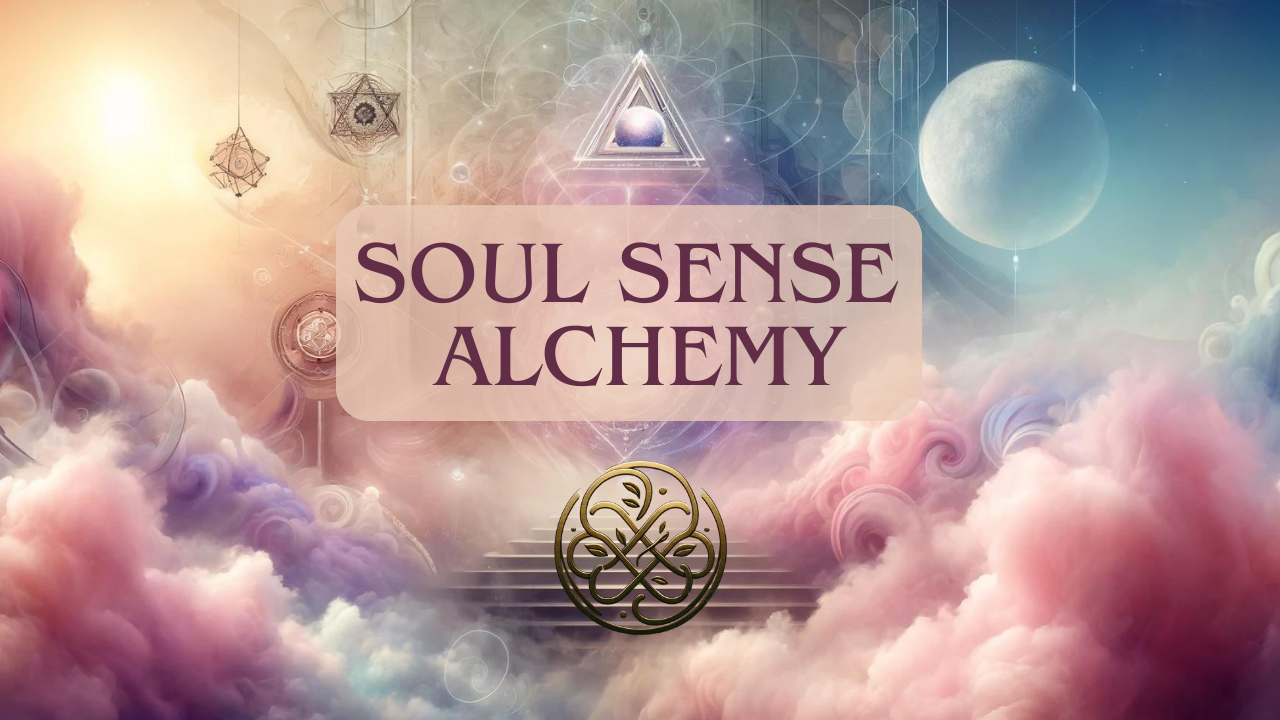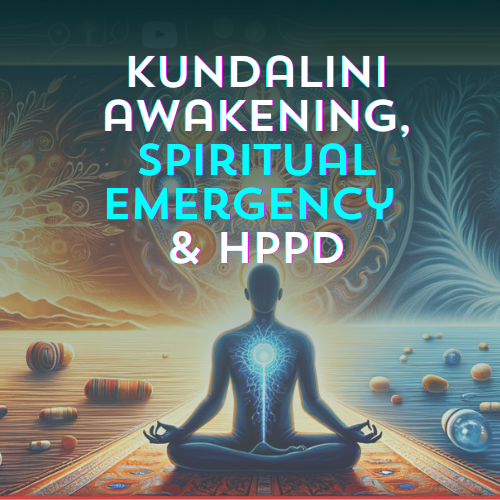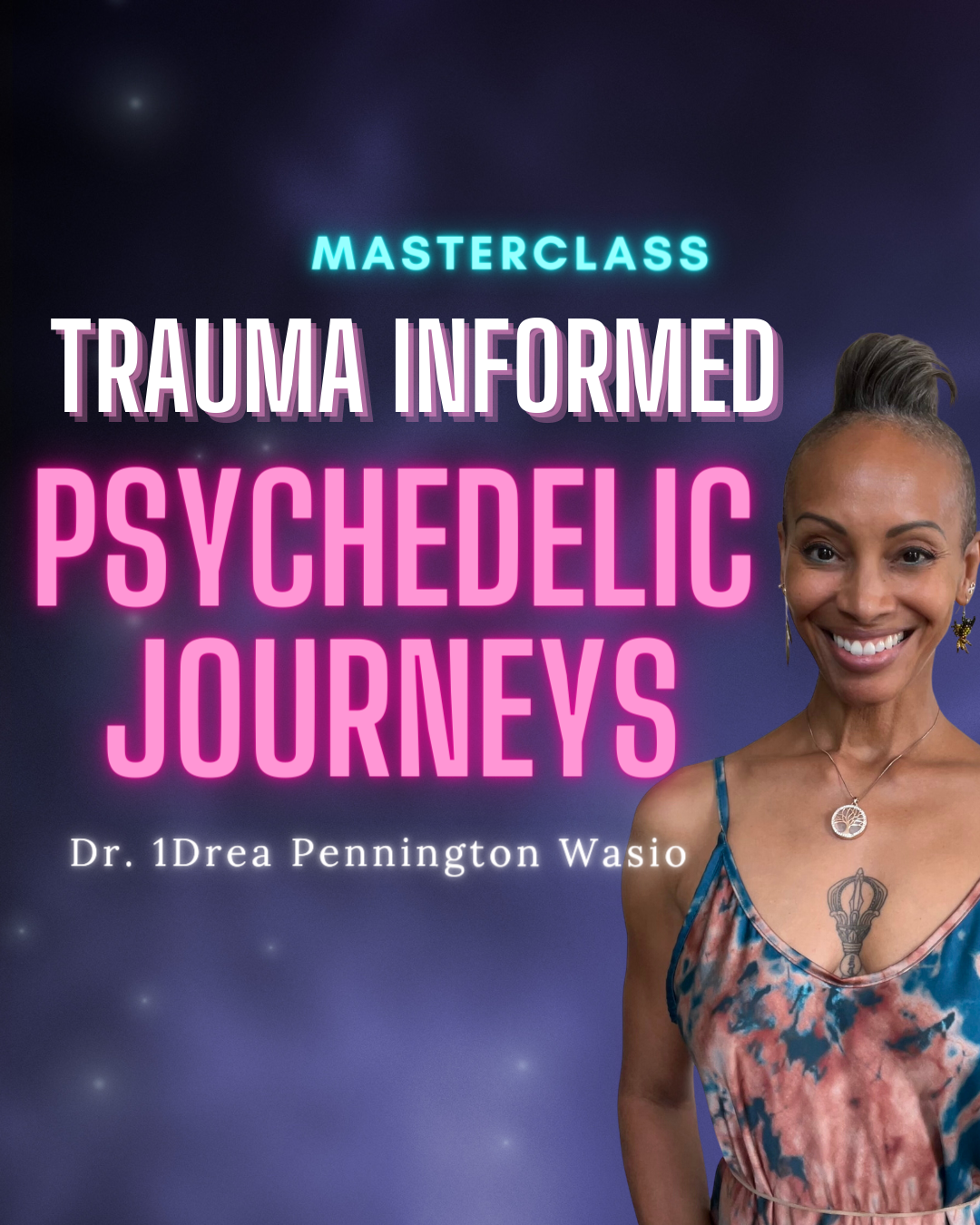The unconscious mind plays a critical role in processing emotions and consolidating memories. Reprocessing may be needed for various types of emotional experiences, particularly those that have been challenging, traumatic, or have led to unresolved feelings or patterns in one’s life. Not processing and integrating emotional experiences can have various negative consequences on an individual’s mental, emotional, and physical well-being. Some of the downsides include: emotional dysregulation, increased stress and anxiety, depression, impaired relationships, maladaptive coping strategies, reduced self-awareness, physical health issues, impaired decision-making, and reduced resilience.
By tapping into neuroplasticity, we can develop new neural connections that allow us to process and integrate these emotional experiences more effectively, leading to improved emotional regulation and resilience. In this series, we’ll explore the importance of the unconscious mind and provide practical exercises to harness its power for emotional healing and personal growth. You’ll also read about some of my clients’ success stories.*
* All names have been changed to protect the privacy of my clients.
Understanding the Unconscious Mind and Emotional Processing
The unconscious mind is responsible for storing and processing a vast amount of information outside of our conscious awareness. This includes our emotional experiences, which can significantly influence our behaviors, thought patterns, and decision-making processes (LeDoux, 1996).
The unconscious mind is also crucial for consolidating memories, particularly emotional memories, which are stored in the amygdala and hippocampus (Phelps, 2004). These memories can be reactivated in response to certain stimuli, leading to emotional responses that may be disproportionate or maladaptive (LeDoux, 2000).
Consider an individual who experienced emotional abuse in a past relationship, where their partner frequently criticized and belittled them. This emotional abuse left the person feeling insecure and unworthy, even after the relationship ended.
One day, this individual receives a slightly critical comment from their boss or coworker about their work performance. Although the comment is not intended to be harsh or overly negative, it serves as a stimulus that reactivates the unprocessed emotions and memories from the past abusive relationship.
As a result, the person may have an emotional response that is disproportionate to the situation, such as experiencing intense feelings of shame, anxiety, or even anger. They may become overly defensive or withdraw from the situation, making it difficult for them to constructively address the feedback or engage in healthy communication.
Through neuroplasticity, we can develop new neural connections that help us process and integrate these emotional experiences more effectively, allowing for better emotional regulation and resilience (Davidson & McEwen, 2012).
In the case above, reprocessing the memories and emotions related to the past emotional abuse could help the individual develop a more balanced self-image, reduce the intensity of their reactions to critical comments, and foster healthier communication and coping strategies. This would ultimately contribute to increased resilience and emotional well-being.
Exercises to Harness the Power of the Unconscious Mind
1. Guided Imagery for Emotional Processing:
Guided imagery involves using the power of visualization to explore and process emotional experiences. By engaging the unconscious mind through vivid mental images, we can tap into emotional memories and promote healing (Esch, Fricchione, & Stefano, 2003).
As an integrative physician and psychedelic therapist, I’ve seen the transformative power of guided imagery firsthand. This therapeutic technique uses mental visualization to access and process emotions, memories, and experiences in a safe and controlled manner, leading to profound healing and personal growth.
One of the key benefits of guided imagery is its ability to tap into the unconscious mind, where unresolved emotions and memories may be stored. By accessing these hidden aspects of ourselves, we can begin to process and understand our experiences in a more conscious and deliberate way.
Guided imagery provides a safe space for emotional exploration. In my practice, I help my clients feel comfortable confronting difficult experiences by guiding them through the process at a pace that suits them. This controlled and supportive environment allows for a greater sense of safety and control during the healing process.
As we work through emotions using guided imagery, I’ve seen my clients develop better emotional regulation and release pent-up feelings, such as grief, anger, or fear. This release often leads to a sense of relief and emotional balance, contributing to overall well-being.
In my experience, guided imagery can also promote cognitive restructuring, which involves reframing thoughts and beliefs about past experiences. By adopting more adaptive perspectives, my clients can reduce negative self-talk and develop more positive, self-affirming beliefs.
One success story involved healing feelings of abandonment through Guided Imagery.
Emma* is a 28-year-old woman who sought help for unresolved feelings of abandonment stemming from her parents’ divorce when she was nine years old. After the divorce, Emma moved away with her mother, which resulted in a significant reduction in contact with her father. Despite having a good relationship with her father now, Emma still struggled with feelings of abandonment and insecurity in her relationships. She had tried talk therapy but felt that something was still missing in her healing journey. I suggested we try guided imagery to help her reprocess and heal from her childhood emotional wounds.
During our guided imagery sessions, I helped Emma to relax and guided her to create a safe, nurturing space in her mind. I then asked her to visualize herself as a nine-year-old girl, experiencing the emotions and memories surrounding her parents’ divorce and her father’s absence.
As we revisited these memories, I encouraged Emma to imagine a wise, compassionate version of herself, who could provide the support, reassurance, and understanding that she needed during that challenging time. This visualization allowed Emma to offer herself the empathy and nurturing that she had longed for as a child, helping her to heal from her feelings of abandonment.
Throughout our sessions, we also used guided imagery to help Emma envision her adult self having a conversation with her father, during which she could openly express her feelings of abandonment and receive understanding, validation, and reassurance from her father. This visualization enabled her to create a new narrative around her experience, fostering a greater sense of closure and emotional healing.
As we continued working together, Emma reported feeling a deeper sense of self-compassion and understanding towards her childhood self. She also noticed improvements in her relationships, as she became more secure and trusting, no longer held back by her past feelings of abandonment.
After several guided imagery sessions, Emma experienced a significant reduction in her feelings of abandonment and insecurity. She reported feeling more at peace with her past and more confident in her ability to form secure, loving relationships. Through the power of guided imagery, Emma was able to reprocess her childhood emotional wounds and heal her feelings of abandonment, paving the way for a healthier, more fulfilling future.
Integration and healing are essential components of the guided imagery process. By integrating emotional experiences and memories, my clients can develop a more coherent and holistic understanding of themselves and their past. This integration fosters personal growth, healing, and increased emotional resilience.
Through practicing guided imagery, you can build valuable coping skills to apply to future challenges and stressors. These skills may include relaxation techniques, grounding exercises, and strategies for managing emotions and thoughts more effectively.
Lastly, guided imagery can enhance self-awareness and self-compassion by encouraging you to reflect on your emotions and experiences with empathy and understanding. In my practice, I’ve found that cultivating self-compassion is a powerful healing force, fostering self-acceptance and emotional well-being.
Self-led Practice: Find a quiet space, close your eyes, and take a few deep breaths. Begin to visualize a safe, calming environment where you can explore your emotional experiences. Allow yourself to engage with any emotions that arise, acknowledging and accepting them without judgment. After exploring these emotions, return to your safe environment and take a few more deep breaths before opening your eyes.
Guided Meditations: You can listen to my Compassion Meditation to begin processing emotional experiences on Insight Timer or download it on our free app.
2. Journaling for Emotional Integration:
Journaling is a powerful tool for processing emotions and integrating emotional experiences. By putting our thoughts and feelings into words, we can gain new insights and perspective, promoting self-awareness and emotional healing (Pennebaker, 1997).
As an integrative physician and therapist, I have found tremendous value in incorporating journaling into my practice. Over the years, I’ve developed a journaling process that I call LifeWriting to help people process their emotions, foster personal growth, and ultimately, lead to a more fulfilling life.
LifeWriting is more than just putting pen to paper or fingers to a keyboard. It’s a structured and intentional approach to journaling that allows individuals to delve deep into their emotions, thoughts, and experiences, fostering a profound level of self-awareness and understanding. By engaging in LifeWriting, my clients can explore their inner world, identify patterns and beliefs that may be holding them back, and cultivate emotional resilience and self-compassion (Pennington et al., 2020, 2023).
One of the key benefits of LifeWriting is its ability to help individuals process and integrate their emotions. By writing about their feelings, experiences, and memories, my clients can gain a clearer perspective on their emotional landscape, which is often the first step toward healing and personal growth.
LifeWriting can also serve as a powerful tool for self-reflection and self-discovery. As individuals explore their thoughts and emotions on paper, they often uncover hidden aspects of themselves, leading to valuable insights and a deeper understanding of their personal narrative. This process of self-discovery can empower my clients to make more conscious and informed choices in their lives, ultimately enhancing their overall well-being.
Through LifeWriting, my clients can also develop a greater sense of self-compassion. By examining their emotions and experiences with empathy and understanding, they can learn to treat themselves with the kindness and care that they deserve. This self-compassion can be a catalyst for personal growth and healing, fostering self-acceptance and a more loving relationship with oneself.
In addition, LifeWriting can help individuals identify and challenge limiting beliefs and negative thought patterns. By bringing awareness to these unhelpful ways of thinking, my clients can actively work to replace them with more positive, empowering beliefs that support their growth and well-being.
The following is a success story about overcoming the “Never Good Enough” narrative through LifeWriting.
Jack* is a 35-year-old man who came to my practice seeking help for his feelings of inadequacy and low self-esteem. He had a difficult relationship with his overly critical mother, who constantly belittled him and made him feel as if he could never meet her expectations. Despite being successful in his career, Jack struggled with an underlying belief that he was never good enough. He had tried talk therapy but was looking for a more introspective and self-driven approach. I suggested that we try LifeWriting journaling to help him re-write his personal narrative and heal from his childhood emotional wounds.
I introduced Jack to the LifeWriting journaling process, which involved reflecting on his past experiences, identifying the negative beliefs that had formed as a result, and rewriting his personal narrative in a more empowering and positive way.
During our sessions, Jack journaled about his childhood experiences with his critical mother, exploring the feelings and beliefs that had arisen from these interactions. He began to see how his mother’s criticism had deeply affected his self-worth and sense of identity, leading him to internalize the belief that he was never good enough.
As Jack continued to journal, he started to challenge and re-write his personal narrative. He began to recognize his accomplishments, talents, and strengths, realizing that his self-worth was not dependent on his mother’s approval. He also practiced self-compassion, forgiving himself for any perceived shortcomings and acknowledging his inherent worthiness.
Throughout the process, Jack also used the LifeWriting journaling method to envision a new relationship with his mother, in which he could set boundaries, express his feelings, and seek validation from within, rather than relying on her approval.
After several weeks of LifeWriting journaling, Jack reported a significant shift in his self-esteem and sense of self-worth. He no longer felt burdened by his mother’s criticism and was able to see himself as a capable, valuable individual. His relationships improved, as he became more assertive and confident in expressing his needs and setting boundaries.
Through the power of LifeWriting journaling, Jack successfully re-wrote his personal narrative, freeing himself from the belief that he was never good enough and embracing his true potential. This transformative process allowed him to heal from his childhood emotional wounds and move forward with a newfound sense of self-worth and empowerment.
Finally, engaging in LifeWriting can provide a sense of catharsis and emotional release. By giving voice to their emotions and experiences, my clients can experience a sense of relief, as if they’ve lifted a weight off their shoulders. This emotional release can be incredibly healing and transformative, leading to a greater sense of inner peace and balance.
LifeWriting is a powerful and effective method for emotional integration that I have found to be invaluable in my practice. By providing a structured and intentional approach to journaling, LifeWriting can help individuals process their emotions, foster self-awareness and self-compassion, and ultimately, enhance their overall well-being and personal growth. I invite you to try this transformative journaling process and discover the healing power of LifeWriting for yourself.
Self-led Practice: Set aside 15-20 minutes each day to write about your emotional experiences. Focus on expressing your feelings and thoughts as honestly and openly as possible. Over time, you may notice patterns and gain new insights into your emotional landscape.
Guided Meditations: Listen to my Safe Space meditation to open your heart and mind to prepare for your journaling sessions. Find it on Insight Timer or download it from our free app.
3. Mindfulness Meditation for Emotional Regulation:
Mindfulness meditation involves cultivating present-moment awareness and non-judgmental acceptance of our thoughts and emotions. This practice has been shown to improve emotional regulation and promote neuroplasticity (Holzel et al., 2011).
As an integrative physician and therapist, I have always been passionate about finding effective ways to help individuals navigate their emotional landscape. Over the years, I’ve developed a unique approach to mindfulness meditation that specifically focuses on emotional regulation. It’s called the Attunement Meditation. I’d like to share with you the 5-step process and how it can help you in processing and regulating your emotions. (Pennington, 2020).
The Attunement Meditation
The Attunement Meditation is a powerful tool designed to cultivate emotional balance, self-awareness, and inner peace. The process consists of five steps: Allow, Attune, Align, Inspired Action, and Appreciation. Each of these steps plays a vital role in helping you navigate your emotions and develop a deeper connection with yourself.
1. Allow: The first step in the Attunement Meditation is to simply allow yourself to be present with your emotions without judgment or resistance. This means acknowledging and accepting whatever feelings arise, without trying to change, suppress, or ignore them. By practicing this level of acceptance, you create a safe space for emotional exploration and foster a greater sense of self-awareness.
2. Attune: The second step involves attuning to feelings of compassion and loving-kindness, both for yourself and others. By cultivating these positive emotions, you can counterbalance any negative feelings you may be experiencing, creating a more balanced emotional state. This step helps to promote self-compassion and empathy, which are essential components of emotional well-being.
3. Align: In this step, you align your mind with higher states of consciousness, such as gratitude, joy, or a sense of inner peace. By connecting with these elevated states, you can shift your perspective and access a more expansive, positive view of yourself and your experiences. This alignment can help you to better understand and process your emotions, leading to increased emotional resilience.
4. Inspired Action: Once you have established a sense of emotional balance and inner peace, you can move on to the fourth step, which is taking inspired action. This involves identifying any steps or changes you may need to make in your life to better support your emotional well-being. By taking action based on your newfound insights, you can create meaningful and lasting change in your life.
5. Appreciation: The final step of the Attunement Meditation is to cultivate a sense of appreciation for yourself, your experiences, and the process of emotional regulation. By practicing gratitude, you can reinforce the positive emotions and insights gained through the meditation, further supporting your emotional well-being.
In conclusion, the Attunement Meditation is a powerful and effective method for processing and regulating emotions that I have found to be invaluable in my practice. By following these five steps, you can cultivate emotional balance, self-awareness, and inner peace, ultimately enhancing your overall well-being and personal growth. I invite you to try this transformative meditation process and discover the healing power of the Attunement Meditation for yourself.
Self-led Practice: Find a quiet space and sit comfortably. Close your eyes and bring your attention to your breath. As thoughts and emotions arise, acknowledge them without judgment and gently return your focus to your breath. Practice for 10-20 minutes each day.
Guided Meditations: You can listen to my Attunement Meditation on Insight Timer or download them on our free app here.
CONCLUSION
The unconscious mind plays a crucial role in processing emotions and consolidating memories, which can significantly impact our emotional responses and decision-making processes. By harnessing the power of neuroplasticity and engaging in these types of exercises that promote emotional processing and integration, we can improve emotional regulation and build resilience. Embrace these practices to enhance your emotional well-being and personal growth.
Scroll down for a list of references on this article.
REFERENCES:
Davidson, R. J., & McEwen, B. S. (2012). Social influences on neuroplasticity: Stress and interventions to promote well-being. Nature Neuroscience, 15(5), 689-695.
Esch, T., Fricchione, G. L., & Stefano, G. B. (2003). The therapeutic use of the relaxation response in stress-related diseases. Medical Science Monitor, 9(2), RA23-RA34.
Holzel, B. K., Carmody, J., Vangel, M., Congleton, C., Yerramsetti, S. M., Gard, T., & Lazar, S. W. (2011). Mindfulness practice leads to increases in regional brain gray matter density. Psychiatry Research: Neuroimaging, 191(1), 36-43.
LeDoux, J. E. (1996). The emotional brain: The mysterious underpinnings of emotional life. New York, NY: Simon & Schuster.
LeDoux, J. E. (2000). Emotion circuits in the brain. Annual Review of Neuroscience, 23, 155-184.
Pennebaker, J. W. (1997). Writing about emotional experiences as a therapeutic process. Psychological Science, 8(3), 162-166.
Phelps, E. A. (2004). Human emotion and memory: Interactions of the amygdala and hippocampal complex. Current Opinion in Neurobiology, 14(2), 198-202.
Pennington, Andrea (2020). The Real Self Love Handbook. Fernley, Nevada: Make Your Mark Global Publishers.
Pennington, et al. (2020, 2023) The Top 10 Traits of Highly Resilient People, 1st and 2nd editions. Ft. Myers Florida: Make Your Mark Global Publishers.
This blog first appeared on AndreaPennington.com in May 2023










